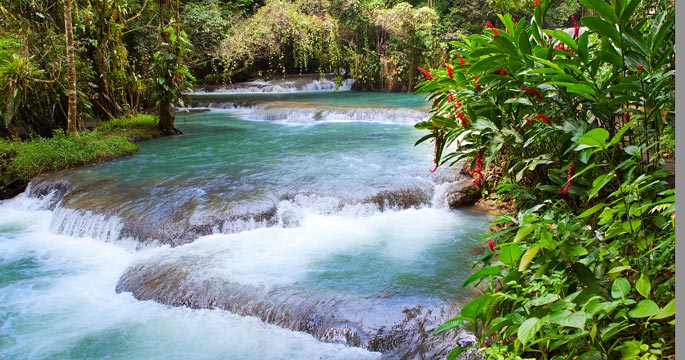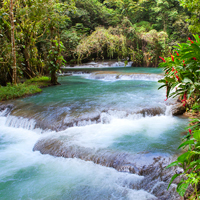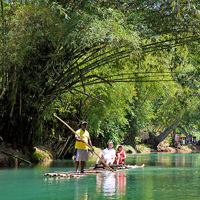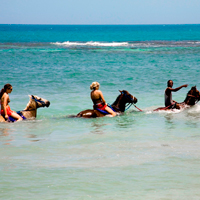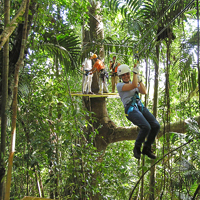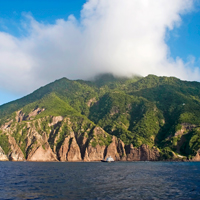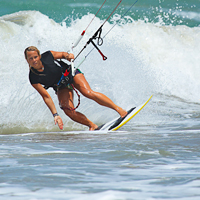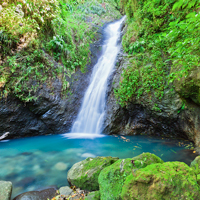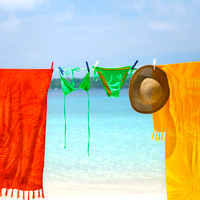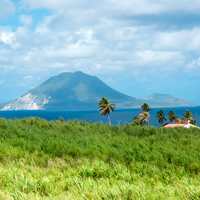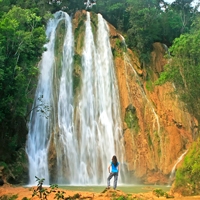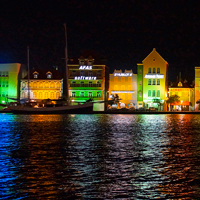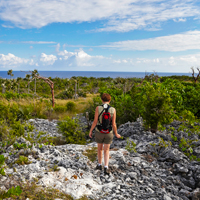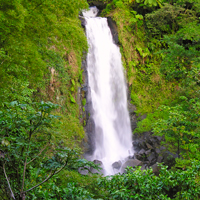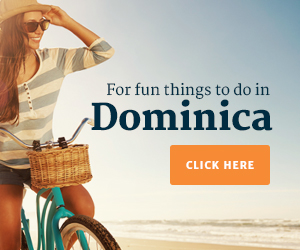Jamaica is one of the largest and most geographically diverse islands in the Caribbean. This bodes well for adventurous vacationers looking to go beyond the usual sun-and-fun routines. Mountains, rainforests, rivers and historic venues provide the backdrop for a diverse range of activities, some mild, others decidedly a bit wild. Here are some of our favorites.
1 Camel Safari
The big-footed desert dwellers were once common in Jamaica, imported by eccentric Englishmen. They turned out to be pretty handy for forging through the tropical foliage, as camel riders sit higher than on a horse. You can saddle up at Prospect Great House in Ocho Rios for a ride through this working plantation, then sample some of the savory fruits grown there.
2 River Rafting
Legend has it that this uniquely Jamaican pastime was started by cinematic swashbuckler Errol Flynn on the Rio Grande near his property in Port Antonio. Once you climb into the seats set atop a 30-foot bamboo raft, a boatman gently poles you down the river. The practice has spread and you can raft the Rio Grande near Port Antonio, the Martha Brae River in Falmouth or the White River near Montego Bay. If you’re looking for a little more adrenaline, there’s also whitewater rafting on the White River, where you can splash through rapids that range up to class four.
<b>
3 Golf
Unlike some of its drought-challenged Caribbean neighbors to the east, Jamaica’s greens are lush year-round, nourished by the island’s 32 inches of annual rainfall. The most lauded course is the prestigious track at The Tryall Club, but you need to be a guest staying on property to play it. If you’re staying elsewhere in the Montego Bay area, Rose Hall offers the top-rated White Witch, Cinnamon Hill and Half Moon courses by reservation. To the east, Both Sandals Country Club and Resort and the Breezes Resort maintain championship level courses, and the Upton Golf Course welcomes all.
4 Horseback Riding
As one of the largest islands in the Caribbean, Jamaica offers many miles of trails, forests and fields that can be explored by horseback. You can find horse stables and guided rides at many locations across the island. Equestrian options range from novice-friendly trail rides through villages, farms and rainforests to longer excursions into the wooded highlands of the interior. North coast tours often ride along the seaside hills before moving down to the beach and taking the horses — and riders — into the ocean for a swim. Falmouth and Montego Bay are both popular starting locations.
5 Croc Hunting
The Black River on Jamaica’s South Coast is one of the few places in the western hemisphere you can see saltwater crocodiles up close. Tours start at the river mouth and enter a wildlife reserve that is home to more than 300 of the carnivorous reptiles, and sightings are pretty much guaranteed. Boats range from open skiffs to shaded deck boats. Itineraries vary, but most include lunch and commentary from veteran guides. Longer tours may include a post- river diversion to the ramshackle Pelican Bar, which is located nearly a mile offshore.
6 Learn to cook Jamaican
Learn to create the island flavors that make Jamaican cooking popular and join a tour with Prospect Outback Adventures. Start with a walk through the garden of a historic Great House to learn about the herbs and spices used in Jamaican cooking. Put that knowledge to work in the historic home’s veranda, where ingredients await, and a chef oversees each guest’s work station as they learn the nuances of creating a savory jerk sauce, and prepare classic Jamaican dishes such as shrimp rundown, steamed callaloo and banana fritters. The culinary experience ends with a sampling of your own savory creations.
7 Great House Tours
The planters of Jamaica lived graciously in this far-flung outpost of the British Empire. The Empire may be gone but their Great Houses are still with us; a dozen or so are open to the public. Harmony Hall near Ocho Rios and Greenwood Great House —which belonged to a cousin of poet Elizabeth Barrett Browning — are two of the best. For something out of the ordinary, sign on for the candle-lit evening tour of the Rose Hall Great House, said to be haunted by the former owner, infamous for her cruelty. The tour concludes with a stop at the estate’s former dungeon, now transformed into a tavern.
8 Zip Lining
Flying through the treetops with the wind in your face and glimpses of the Caribbean far below in the distance — if that won’t get your heart pumping you’re going to need another shot of rum. There are zip line operators near most of the Jamaica’s resort hubs. One of the most exciting is the Flight of the White Witch. This course will have you rappelling down heart-stopping drops and gliding through foliage tunnels high above the ground and across rushing rivers. The line known as the Inter-Parish Express delivers a 1,250-foot run that reaches speeds of 35 miles an hour.
9 Downhill Mountain Biking
Cycling is popular in Jamaica and there are organized rides for road bikes. If you aren’t into tight Lycra shorts and hunching over your handlebars, you can do the all-downhill Blue Mountain ride. It starts with an uphill truck ride into the high elevations where the Blue Mountain signature coffee grows, and yes you can sample some. Then you let gravity do the work on a two-and-a-half hour downhill coast that takes in big views of the island, with stops at waterfalls and other points of interest.
10 Dive In, Rick’s Cafe
This is one of the island’s iconic experiences. Rick’s sits atop the West End Cliffs just south of Seven Mile Beach in Negril. For many years, patrons have gathered a bit of courage, often with the help of a shot Myers or swig of Red Stripe, and then plunged off one of Rick’s diving platforms into the waters of the cove below. The highest platform is 35 feet — which will seem like 350 feet when you’re staring down at the water. Or, you can just watch bolder souls make the jump while you enjoy the sun sinking slowly in the west.

